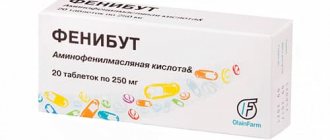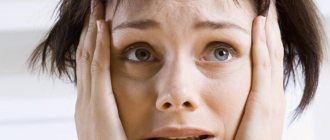Dietary supplements inexpensively
COVID-19 is an acute respiratory disease caused by a new strain of coronavirus, SARS-CoV-2. The virus was first identified at the end of 2021 in the Chinese city of Wuhan and since then has been actively spreading throughout the world, causing a pandemic.
The virus spreads quite quickly. It is transmitted from a sick person to a healthy person by airborne droplets (infectious particles are released when sneezing and coughing), or by contact (by contact with surfaces contaminated with respiratory secretions). Research is still being conducted on how quickly the virus can spread and in what other ways this can happen. However, experts already claim that carriers of the virus are infectious not only with symptoms of the disease, but also pre-symptomatic and asymptomatic individuals.
Treatment of covid pneumonia
Treatment of covid pneumonia in the clinic and at home. What you need to know about the disease. Recommendations from experienced doctors. Consequences of coronavirus. When to call a doctor.
More details
Call a paid therapist for coronavirus
If the Covid test shows a positive result and your condition is stable, you can call a therapist at your home in Moscow. MC "KORSAKOV": high-quality treatment of coronavirus at home.
More details
Covid test
Do you suspect coronavirus? Take a Covid test right at home. The accuracy of the results is more than 95%. All types of tests for covid. We work around the clock.
More details
Covid smear
A Covid smear is a quick and accurate way to diagnose coronavirus. Get tested without leaving home. Get results within 1 day.
More details
PCR for Covid
Do you suspect that you have become infected with coronavirus? PCR testing for Covid can be done at home. Specialists arrive at any time. Fast, reliable, inexpensive.
More details
Paid hospitalization for Covid
Are they being sent to a hospital for treatment of coronavirus? Paid hospitalization for Covid – high-quality medical care at affordable prices. Fast, safe, around the clock.
More details
Transporting a patient with Covid
Don't risk your health and the health of others! Transporting a patient with Covid in an ambulance is the optimal solution to the problem at an affordable price.
More details
Clinical manifestations of coronavirus
People with coronavirus may have only partial symptoms or no symptoms at all. But most patients experience the following symptoms:
- Increase in body temperature to 37-39 degrees Celsius;
- Feverish state;
- Pain throughout the body, aches, severe weakness;
- Fatigue;
- Shortness of breath and difficulty breathing;
- Loss of smell and taste;
- Headache;
- Conjunctivitis;
- Myalgia;
- A sore throat;
- Nasal congestion (usually without runny nose);
- Nausea, vomiting, digestive system disorders (uncommon).
The incubation period for coronavirus ranges from 2 to 14 days. Symptoms usually appear suddenly, most often on the 7th day. In most cases, the disease occurs in mild to moderate form, and patients are treated on an outpatient basis. The risk of developing complications and severe disease increases with age, in the presence of chronic diseases, immunodeficiency conditions, mental disorders, obesity, problems with the heart, kidneys, and lungs.
Severe forms of coronavirus are characterized by shortness of breath, lack of air, hypoxia, and extensive lung damage, which can lead to respiratory failure, shock, multiple organ failure, and premature death. When the disease is severe, a person often requires oxygen support or connection to a ventilator.
Coronavirus can also cause serious problems such as heart disease (arrhythmia, cardiomyopathy, acute heart injury), coagulation disorders (thromboembolism, arterial clot formation, hemorrhage), sepsis, shock.
But in addition to the above symptoms, COVID-19 can also cause serious disturbances in a person’s psycho-emotional state. One of the most common problems is the occurrence of panic attacks in people who have had coronavirus.
Why do panic attacks occur after coronavirus?
Panic attacks are a neurotic disorder characterized by attacks of unreasonable anxiety and severe fear, combined with somatic manifestations. The causes of panic attacks are still not fully understood, but it is known for sure that they arise as a result of severe emotional shock or stress (excessive physical activity, pregnancy, stress, illness).
Coronavirus has become a real challenge for many. Fear of getting sick, severe illness, long-term treatment, forced self-isolation, fear of losing a job and source of income, loss of a loved one due to complications due to coronavirus - all this has a negative impact on the people’s psyche. For many, the pandemic has become a real shock, the consequences of which people have been struggling with for a long time. Statistics show that one of the most common problems that arise after coronavirus is panic attacks - a peculiar consequence of COVID-19, a reaction to stress. Mostly young people aged 20-30 years and in most cases women are susceptible to this neurotic disorder.
Symptoms of a panic attack
- Severe groundless fear, panic and horror;
- Chest pain;
- Difficulty breathing, feeling of lack of air;
- Increased pulse and heart rate;
- Chills, trembling in the body;
- Blood pressure surges;
- Dizziness;
- Fogginess, confusion, loss of sense of reality;
- Fear of going crazy or dying.
Additional symptoms may be: frequent urination, stool disorders, increased sweating, a feeling of a lump in the throat and tightness in the chest, cramps in the limbs, impaired motor function, insomnia.
The duration of one panic attack ranges from several minutes to several hours (most often up to 30 minutes). The attack usually begins suddenly under the influence of an external irritating factor - a situation in which the patient experiences discomfort, for example, while traveling in transport, air travel, being in a crowd, etc. Depending on the severity of the disease, panic attacks can occur 1-2 times a month up to several times a day.
Panic disorder is not limited to one attack. The first episodes frighten a person so much that he begins to anxiously await the onset of the next attack. This further increases emotional stress, making the situation worse.
At the same time, panic disorder is not always an independent disorder, but may be a manifestation of another disease, for example, heochromocytoma, somatoform dysfunctions, depression, phobic disorders, post-traumatic stress disorder, diseases of the endocrine, cardiovascular system, due to taking medications, etc. Panic attacks , developing after coronavirus, experts classify as disorders that arise against the background of stress and a high drug load on the body.
Why are panic attacks dangerous?
Panic and anxiety attacks, when repeated frequently, can cause death. When the first symptoms of this neurological disorder appear, you should seek help from a specialist. Otherwise, there is a risk of developing phobias, when, in anticipation of a new panic attack, a person will consciously avoid people, public places, and transport. Fear of a panic attack can lead to conscious reclusiveness.
Panic attacks can cause the following complications:
- Depression;
- Asthenia;
- Sleep disorders (insomnia, shallow sleep, nightmares);
- Neurasthenia;
- Phobic disorders;
- Neuroses.
Lack of timely medical care for panic attacks can lead to a personality disorder from which the patient will no longer be able to get rid of. Some patients with frequent panic attacks may deliberately refuse food, which leads to dystrophy and diseases of the internal organs.
Treatment of covid (COVID-19) at home
Call a narcologist Call a psychiatrist
Call an ambulance Call an emergency service
A person withdraws into himself, not understanding how to get rid of panic attacks, he becomes depressed, does not believe that anyone can help him, refuses psychological help and may attempt suicide.
Treatment of panic attacks in patients after coronavirus
Panic attacks themselves do not threaten a person’s life, but without proper medical care, their frequency and intensity increases, the intensity of the manifestation of somatic disorders increases, which significantly worsens a person’s quality of life.
Treatment of panic attacks has a positive prognosis, provided that you consult a doctor in a timely manner. Complex therapy allows you to reduce the frequency and intensity of attacks, and then completely rid the person of the problem. The most pronounced effect is achieved when using an integrated approach - prescribing drug maintenance therapy, psychotherapy and physiotherapeutic treatment to the patient.
The treatment of panic attacks in patients after coronavirus is somewhat different from the treatment of panic attacks in other patients. After Covid, a person’s body is very weakened, he needs more time to recover from the illness. If the coronavirus was in moderate or severe form, then the patient probably received treatment with antibiotics, immunomodulators, antitussives, antiallergic drugs, and took vitamin complexes. It is necessary to prescribe drugs to such a patient to correct the mental state carefully, strictly according to indications and taking into account contraindications and possible side effects.
Drug treatment for panic attacks
There are two types of medications for the treatment of panic attacks: for quick help during an attack (act instantly) and medications for continuous use (preventive).
The first group includes benzodiazepine tranquilizers (alprazolam (Xanax), clonazepam, diazepam (Relanium), phenazepam). These are potent prescription drugs that are not commercially available. They quickly relieve an acute condition, relieve anxiety and eliminate vegetative manifestations during an attack. Such drugs are used once as an emergency aid to a patient who has a severe panic attack, or in short courses. Long-term use of benzodiazepine tranquilizers causes persistent mental dependence in the patient and forms tolerance to the drug - the need to increase the dose to obtain an effect.
Non-benzodiazepine tranquilizers (hydroxyzine (atarax), mebicar, etifoxine, meprobamate) have a less pronounced effect compared to benzodiazepine drugs, do not cause addiction, are well tolerated by the patient, and can be used both once and systematically to prevent panic attacks.
Neuroleptics with a sedative effect are drugs that can eliminate feelings of anxiety and stop a panic attack. The most commonly used are Thioridazine (Sonapax), Periciazine (Neuleptil), Chlorprothixene (Truxal), Quetiapine (Seroquel), Alimemazine (Teraligen), Sulpiride (Eglonil). The disadvantage of this group of drugs is that not only the feeling of anxiety is suppressed, but also other feelings - joy, surprise, curiosity, etc.
Antidepressants with sedative effects are used as first aid and to prevent panic attacks. The effect develops gradually, but is long-lasting.
Normotics - allow you to restore the balance between the processes of excitation and inhibition of the nervous system. Widely used in the treatment of panic attacks in people with brain injuries, stroke survivors, and hypoxia.
Drug treatment should be prescribed by an experienced doctor, taking into account the overall clinical picture, collecting anamnesis, assessing all the risks and the expected result.
Psychotherapy in the treatment of panic attacks after covid
All over the world, cognitive behavioral psychotherapy is recognized as the most effective in treating panic attacks. This method of psychotherapeutic influence allows one to achieve positive results in a relatively short time (6-12 sessions), enhance the effect of drug treatment or completely eliminate the need for pharmacotherapy.
The psychotherapist, using special tests and techniques, determines the root cause of the disorder, identifies the triggers of panic, explains to the patient what is happening from a scientific point of view (psychoeducation of the patient), identifies erroneous ideas about panic, helps to divide the individual’s emotions into productive and unproductive, and as a result, change the patient’s idea of situations and about your condition. The duration of the course of psychotherapy is determined for each patient individually. Treatment is anonymous.
Physiotherapeutic methods for treating panic attacks
Physiotherapeutic treatment for panic attacks after coronavirus in combination gives good results. COVID-19 in most cases affects the upper and lower respiratory tract, causing complications on the nervous system, musculoskeletal system, and cardiovascular system. Physiotherapeutic procedures allow the body to recover faster from illness, correct the psychophysical state, normalize the functioning of internal organs, and improve blood formation processes.
Write to WhatsApp
COST OF TREATMENT
In medicine, the following methods of physiotherapeutic treatment are used to treat panic attacks and other mental disorders in patients who have suffered from coronavirus:
Xenon therapy - inhalation of the inert gas xenon mixed with oxygen through an inhalation mask. Xenon has sedative, hypnotic, analgesic, and regenerating properties. The gas is non-toxic, does not cause allergic reactions, and is quickly eliminated from the body unchanged through the lungs. Xenon therapy accelerates the process of oxygen saturation of the blood, improves metabolic processes at the cellular level, helps restore the functioning of the respiratory system, including after covid pneumonia, bronchitis, tracheitis, etc. During panic attacks, xenon helps to quickly relieve nervous tension, correct the psycho-emotional state, and normalize dream. In combination with drug therapy, inhalation of a xenon-oxygen mixture can achieve lasting results. The duration and intensity of the xenon therapy course is determined by the doctor for each patient individually.
Heliox - inhalation of a helium-oxygen mixture heated to the optimal temperature. Helium is an inert gas, tasteless, colorless and odorless. Heliox today is widely used for the treatment of pulmonary, cardiological and ophthalmological diseases, for removing a person from hypoxia and hypothermia, for the treatment of alcohol and drug addiction. Helium inhalations allow better transport of oxygen to brain cells, into the cells of the lower respiratory tract, and normalize blood supply to the brain. Helium-oxygen inhalations are one of the best solutions for recovery after coronavirus and for the treatment of panic disorders, as they have a regenerative and sedative effect. The required number of Heliox sessions is determined for each patient individually.
Ozone therapy intravenously (drip) is a therapeutic method that has many therapeutic effects. Intravenous injections with saline solution enriched with ozone have antiviral, antibacterial, anti-inflammatory, and antioxidant effects. Ozone therapy is actively used in medicine to treat diseases of the cardiovascular system, neurological diseases, problems of the gastrointestinal tract, gynecological and urological diseases and diseases of the ENT organs. Ozone therapy allows you to restore the functioning of all organs and systems of the body after coronavirus, strengthen the immune system, and improve the functioning of the central nervous system. The procedure is carried out strictly according to indications.
ILBI (intravenous laser blood irradiation) is a method of light therapy, which is based on the impact on human blood cells with a special LED sensor inserted intravenously using a thin needle. Low-intensity laser irradiation is applied to blood cells directly in the vascular bed. ILBI has a powerful sanogenic effect, allows you to systemically increase immunity and restore the body. In addition, ILBI has a beneficial effect on the hematopoiesis process, changes the composition of plasma, rheological properties, which is useful after surgery, severe respiratory diseases, after infections, etc. The ILBI procedure is prescribed exclusively by a doctor based on a study of the patient’s medical history, clinical picture and assessment general psycho-emotional state of the patient.
Electrosleep is one of the most widely used electrotherapy methods. It is based on the use of pulsed low-frequency currents that affect the central nervous system, causing its inhibition and, as a result, a state close to sleep. To carry out the procedure, a special device is used that converts the current into pulses. The impulses have an effect directly on the cerebral cortex and subcortical formations of the patient. The procedure allows you to restore emotional, vegetative and humoral balance, normalizes higher nervous activity, and has a sedative and hypnotic effect. Electrosleep also has a positive effect on the process of hematopoiesis in the body, improving blood clotting and lowering cholesterol levels in the blood. The procedure improves carbohydrate, lipid, protein, mineral metabolism, and accelerates regeneration processes. Electrosleep treatment is recognized as one of the safest. It is prescribed to children from 3 years of age, as well as pregnant and lactating women. This method of therapy is effective in the treatment of panic attacks of any etiology, including after coronavirus infection.
Treatment of panic attacks after coronavirus at the KORSAKOV clinic
In medicine, modern pharmacological, psychotherapeutic and physiotherapeutic methods are used to treat panic attacks and anxiety disorders that occur after coronavirus. Therapy is carried out around the clock in the hospital, on an outpatient basis and at the patient’s home, while maintaining the anonymity of clients.
The clinic employs highly qualified therapists, psychiatrists, psychotherapists, physiotherapists, narcologists, resuscitators, who are ready to take on the most difficult cases to help a person return to a full social life. The cost of services is fixed.
You can ask any questions you may have by calling the hotline of the KORSAKOV clinic +7 (499) 288-19-74.
Tremor in adolescents, adults and the elderly: causes, symptoms, treatment and prevention methods
Tremor in adolescents is a common phenomenon that occurs during hormonal changes. Immaturity of the brain leads to the fact that the child cannot process huge flows of information at school and in extracurricular activities. This is reflected in the dysfunction of the nervous system and provokes hand tremors.
In adolescents, tremors may occur at rest and become worse with physical activity or anxiety. The child may withdraw into himself, which will lead to the development of nervous disorders and complexes. Parents must provide moral support so that the child understands that he is the same as everyone else, then the depressed state will soon pass.
When working out in the gym, young people experience physical stress, which is also considered the cause of tremors. Sometimes athletes experience traumatic brain injuries accompanied by tremors. Limbs may also begin to twitch when staying in the same position for a long time.
In adults, tremors occur when blood sugar levels suddenly drop. This pathology can be caused by pathological or physiological reasons. Attacks of trembling appear in people at the initial stage of diabetes mellitus, with pancreatic tumors, liver diseases and alcoholism. Hand trembling is sometimes observed with excitement and fear. After some time it goes away on its own. With prolonged anxiety, a person develops depression, leading to physical and nervous exhaustion. Even minor stress and physical activity can cause tremors. The patient feels anxiety, melancholy, often cries and withdraws into himself. Tremors also often occur in people who abuse alcohol or drugs.
The right hand of an adult may tremble due to impaired cerebral circulation in the right hemisphere, and the left hand may tremble due to intense stress on the hand or carrying heavy loads. Also, the cause of tremor may be incomplete pinching of the nerve due to a hernia or tumor.
Hand twitching in older adults can be a symptom of a variety of medical conditions. Mostly, tremor occurs against the background of damage to the liver, kidneys and thyroid gland, after taking certain medications. Tremors often appear in Parkinson's disease. According to statistics, pathology makes itself felt at the age of over 60 years. The upper limbs tremble even at rest.
The cause of tremor in older people can be Wilson-Konovalov disease. It is characterized by a violation of copper metabolism in the body. Copper gradually accumulates in organs and has a toxic effect on the entire body.










